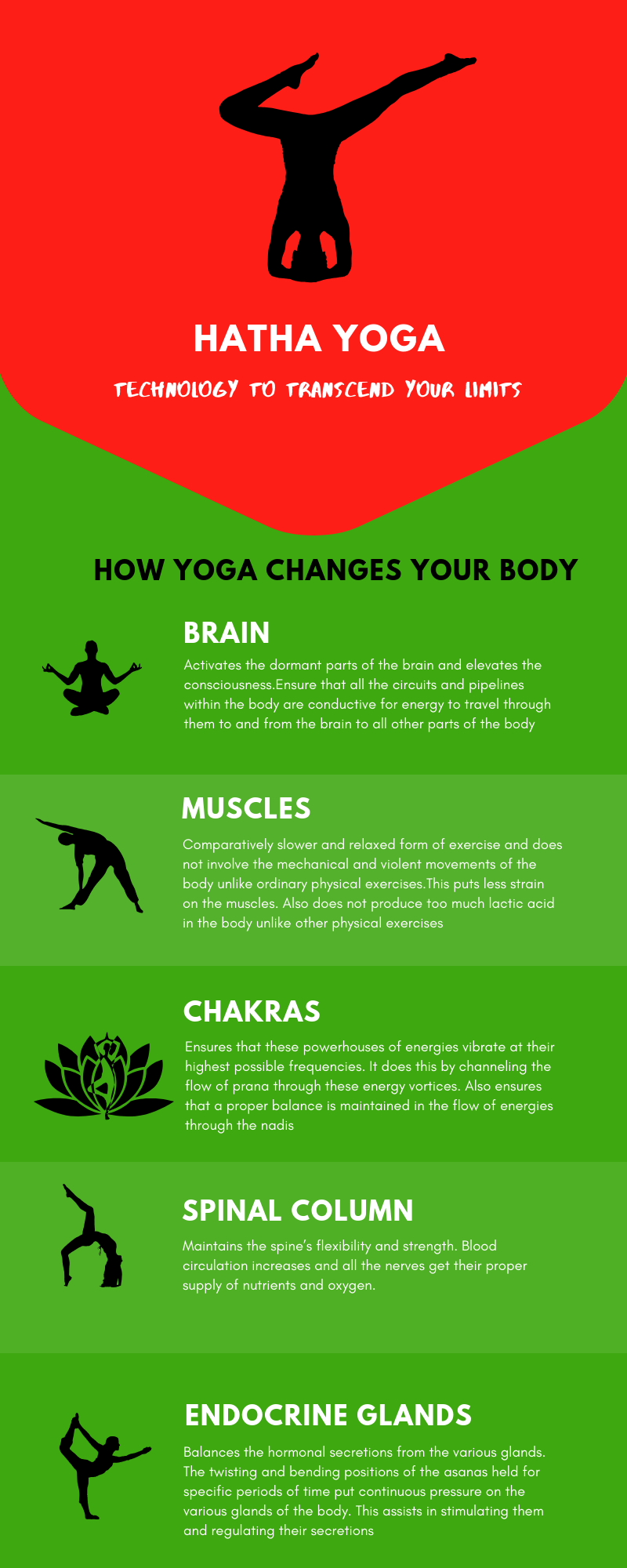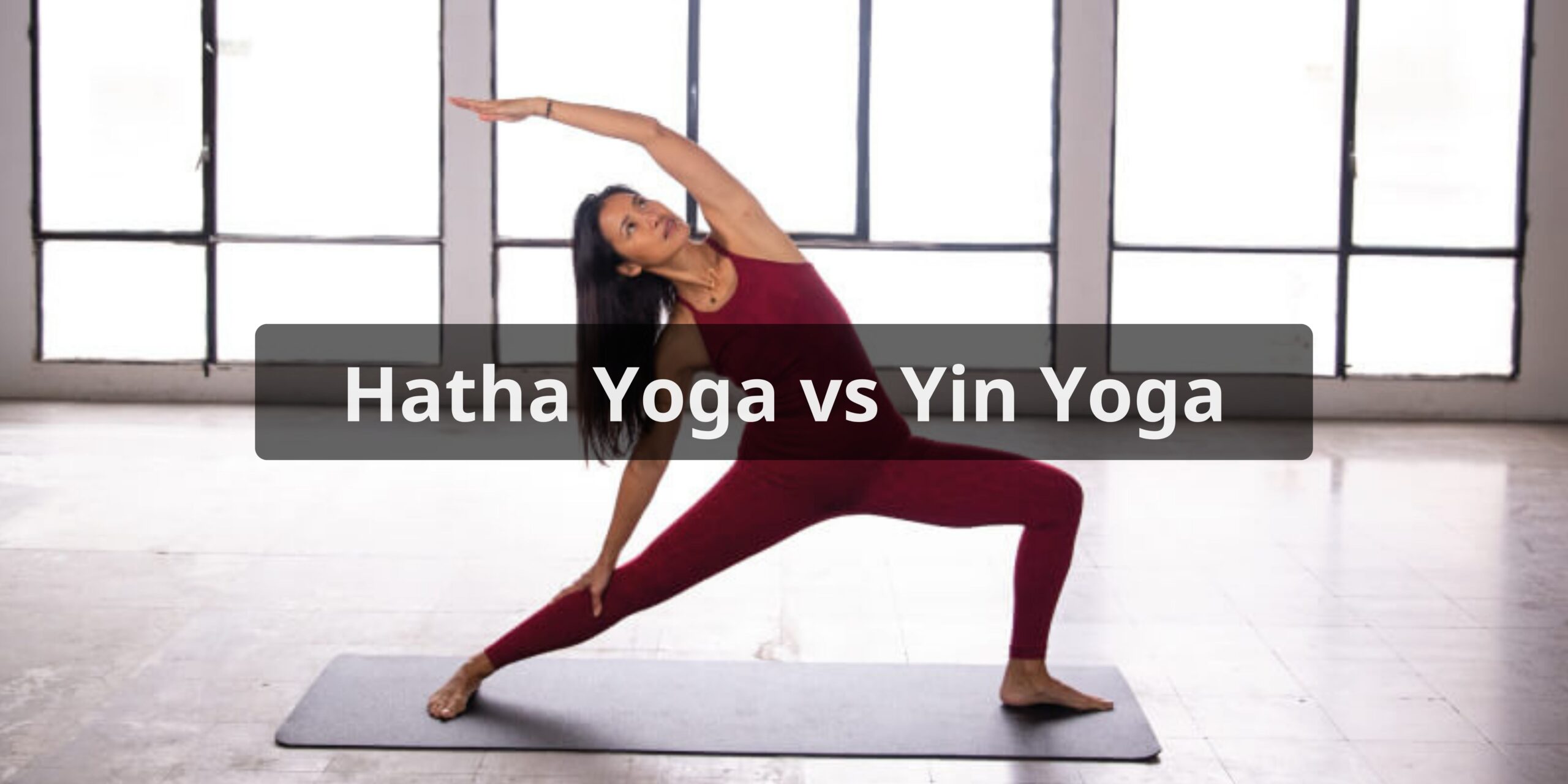Yoga has become an increasingly popular practice around the world. From busy urban centers to small rural towns, you’ll find yoga classes and studios catering to people from all walks of life.
There are numerous styles and schools of yoga, each with their own unique characteristics. Hatha and Yin are two styles that have gained considerable popularity and following in recent years. Despite some apparent similarities, they are actually quite distinct in their approaches.
In this article, we’ll take a close look at hatha yoga vs yin yoga – their origins, goals, practices, and benefits – to understand the key differences between these two styles.
What is Hatha Yoga?

Hatha yoga refers to the physical branch of yoga that focuses on asanas (postures) and pranayama (breathwork). The word “hatha” comes from the Sanskrit terms “ha” meaning “sun” and “tha” meaning “moon”, representing the balance between opposing energies.
Here are some key features of hatha yoga:
- Origins – Hatha yoga has its origins in ancient spiritual texts like the Hatha Yoga Pradipika and Gheranda Samhita. These texts describe cleansing practices, asanas, mudras, bandhas and pranayama.
- Goals – The primary goal is using the physical body to promote mental, spiritual and physical health and wellbeing. Hatha aims to balance strength and flexibility.
- Practices – Emphasizes doing asanas with awareness. Focuses on alignment, form, breathing, Flows through movement. Classes may include sun salutations, standing poses, forward bends, backbends, twists and inversions.
- Benefits – Builds strength, flexibility, balance, body awareness. Calms the mind, reduces stress. Therapeutic for various health conditions.
Hatha yoga creates energetic balance in the body through the dualities of sun/moon, ha/tha, masculine/feminine, strength/flexibility. It is a path to create harmony between the physical and the subtle spiritual energies.
What is Yin Yoga?
Yin yoga is inspired by traditional Chinese meridian theory and daoist philosophy. It was popularized by yoga teachers Paulie Zink and Paul Grilley in the 1970s.
Here are some defining features of yin yoga:
- Origins – Based on Chinese daoist and Taoist yoga concepts of opposites – yin/yang, feminine/masculine energies. Influenced by acupuncture meridian theory.
- Goals – Aims to access deeper fascia and connective tissues. Targets the body’s yin or more stable, stationary tissues. Calms the mind, increases awareness.
- Practices – Involves passive, seated asanas held for long durations. Mainly targets the lower body – hips, pelvis, inner thighs. Uses props to relax muscles. Focus on stillness, breathing and mindfulness.
- Benefits – Improves joint mobility, lubricates connective tissues. Releases stored tension in fascia. Stimulates meridian energy flow. Deeply restorative and calming.
The long-held, passive stretches of yin stimulate the body’s deeper connective tissues and meridian channels. It cultivates stillness in body and mind.
Key Differences Between Hatha and Yin Yoga
Now that we have explored the essence of each style, let’s compare some of the key differences between hatha and yin yoga:
Intensity and Pace
- Hatha – Focuses on a series of active movements and flows. Can be quite athletic and energetic in pace.
- Yin – Slow, passive stretches held for long periods. Allows muscles to relax into each pose. Much slower pace.
Asanas and Targeted Tissues
- Hatha – Includes a variety of asanas working the whole body. Targets muscles, tissues closer to skin surface.
- Yin – Limited asanas mainly targeting hips/pelvis, inner thighs and spine. Affects deeper fascia and connective tissues.
Purpose and Effects
- Hatha – Physical fitness, strength, flexibility, balance. Energizing, builds heat and muscular tone.
- Yin – Releases fascial tension, joint/mobility. Stimulates meridian channels. Deeply calming and restorative.
Alignment and Props
- Hatha – Strong focus on body alignment in each pose. Limited use of props.
- Yin – Uses props to relax muscles and enable deeper tissue release. Alignment is less strict.
Breathing and Focus
- Hatha – Coordinates breath with movements. Active, flowing practice.
- Yin – Stillness allows observation of breath’s subtleties. Meditative, internal awareness.
Recommended Frequency
- Hatha – Can be done daily. Helps maintain strength and flexibility.
- Yin – 2-3 times a week maximum. Too frequent can over-stress connective tissues.
Who Might Benefit from Each Style?
When choosing between hatha or yin, it helps to consider your current state and needs:
- Hatha is great for people seeking a moderately active practice to build strength, flexibility and balance in the muscles and joints. The energetic flows are invigorating.
- Yin is best for those who already have an active lifestyle or practice, and need deep relaxation and tissue release. Ideal for runners, athletes, those with muscle tightness or soreness.
- For general health – Combine hatha 2-3x/week with yin 1-2x/week to balance muscle work with fascia release.
- For physical limitations – Yin can improve joint mobility and ease pain. Hatha strengthens areas around injured tissues.
- For mental wellbeing – Yin calms the nervous system. Hatha energizes and reduces anxiety/depression.
Conclusion
In summary, hatha and yin yoga provide complementary benefits through contrasting approaches. Hatha yoga uses a dynamic series of postures to build strength, flexibility and balance in the muscles and joints. It develops energetic awareness through breath-body coordination. Yin yoga applies passive, long-held stretches to stimulate deeper fascia and connective tissues. It cultivates stillness and inner awareness.
To fully harness the benefits of yoga, it is ideal to incorporate elements of both styles into your practice. Hatha yoga provides vital activity and muscle tone, while yin yoga reverses the effects of daily stress and tightness. Together, they allow the body’s physical and subtle energies to flow freely, promoting vibrant health, resilience and wellbeing.
FAQs About Hatha Yoga vs Yin Yoga
How does the pace of practice differ between Hatha and Yin Yoga?
Hatha Yoga typically involves a more dynamic pace, moving between poses with mindful transitions. In contrast, Yin Yoga involves longer pose holds, encouraging relaxation and deep stretching.
Are there variations in the intensity of poses in Hatha and Yin Yoga?
Yes, there are. Hatha Yoga can have a broader intensity range, including both gentle and vigorous poses. Yin Yoga, while gentle in nature, focuses on deep, passive stretching to target connective tissues.
Which style is more focused on strength and flexibility – Hatha or Yin Yoga?
Hatha Yoga places a stronger emphasis on both strength and flexibility, incorporating a variety of poses that challenge muscular engagement. Yin Yoga prioritizes flexibility through long-held, relaxed stretches.
How do Hatha and Yin Yoga differ in terms of breathwork and meditation?
Hatha Yoga often integrates breathwork (pranayama) and meditation within the practice, although it can vary. Yin Yoga incorporates breath awareness but usually places more emphasis on meditation during the prolonged poses.
Can beginners start with either Hatha or Yin Yoga?
Yes, beginners can start with either Hatha or Yin Yoga, depending on their preferences. Hatha offers a broader introduction to yoga, while Yin provides a gentle way to develop flexibility and mindfulness.
Which style is more suitable for relaxation and stress relief – Hatha or Yin Yoga?
Both styles offer relaxation and stress relief, but Yin Yoga’s long holds and focus on mindfulness make it especially effective for stress reduction and cultivating relaxation responses.
Are there specific populations that might benefit more from Hatha Yoga or Yin Yoga?
Hatha Yoga’s dynamic nature can suit those seeking a balanced practice with strength and flexibility benefits. Yin Yoga is excellent for individuals looking to improve flexibility, find stillness, or with limited mobility seeking gentle stretching.
How do the benefits of increased circulation and deep stretching in Hatha Yoga compare to Yin Yoga?
Hatha Yoga’s dynamic movements can enhance circulation through a variety of poses. Yin Yoga’s deep, sustained stretches target connective tissues, promoting joint health and flexibility, though with a lesser emphasis on circulation.

